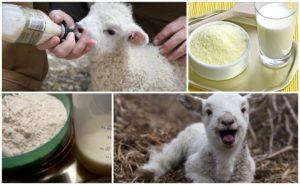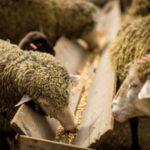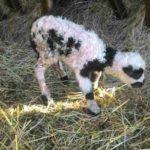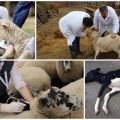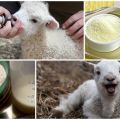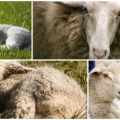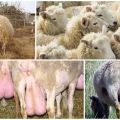Causes and signs of white muscle disease in lambs, treatment and prevention
White muscle disease of lambs is understood as a serious pathology, which is characterized by a serious violation of metabolic processes in the body. The disease most often affects the nervous system, heart and skeleton. If signs of illness appear, you should contact your veterinarian in a timely manner. Otherwise, the probability of death of animals is high.
Description and causes of the disease
The development of animals depends on the amount of trace elements in the body. With a shortage or excess amount of a certain substance, there is a risk of metabolic disorders and the development of various pathologies. Lambs quite often suffer from micronutrient deficiencies. This is due to the rapid growth of animals and improper maintenance. Cubs are highly sensitive to selenium deficiency. It is a truly biotic element, which is contained in small amounts in tissues and organs.
With a lack of this substance, white muscle disease occurs in lambs. With this pathology, the liver, skeletal muscles, myocardium and other organs are affected. In affected individuals, the muscles resemble boiled fish or chicken, and most often the pathology develops in winter or spring. With anomalies of intrauterine development, it appears immediately after birth. In 1 month, up to 15% of animals can be affected. In 2-3 months, this parameter often increases to 70%. At another age, the disease is much less common.
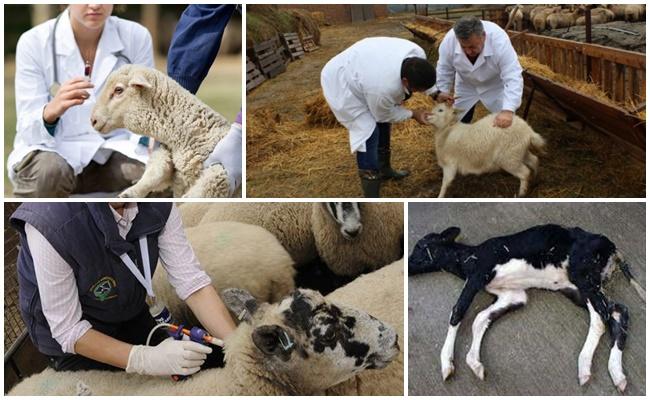
Most often, lambs get sick when grazing on acidic soil or in the lowlands of rivers. Despite the large volume of selenium, the element combines with iron. This provokes the appearance of insoluble compounds that do not enter the plants.
The level of this substance in grass depends on temperature and humidity. In cold and rainy weather, the volume of the element is significantly reduced. Also, the risk of developing the disease increases with a lack of vitamin E. As a result, animals weaken, they have seizures and other unpleasant symptoms.

Signs and symptoms of the disease
Most often, the disease develops in winter or spring. It can have several flow options. With an acute course of the disease, which is characteristic of young children under 1 month of age, there is a depression, insufficient physical activity, loss of appetite, weakening of muscle tone, the appearance of tremors, and stagnation.
Lambs with this condition have weak front legs. Therefore, the gait is disturbed, the animals are forced to rely on the metacarpal or toe joints, and lameness occurs. With damage to the heart and blood vessels, the pulse quickens to 140-200 beats per minute, arrhythmia develops. In difficult situations, lambs lie with their necks extended.Most of these animals die.
Subacute course is usually observed in 1-3 months. At the same time, there is a lag in growth, unsteadiness of gait, lameness, tremor. There is also a weakening of muscle tone, paresis, the muscles of the pelvic girdle atrophy. When moving, lambs may moan. With myocardial damage, the pulse becomes more frequent, arrhythmia develops. There is also a risk of bronchopneumonia and damage to the digestive organs. After 10-20 days, the lamb may die.
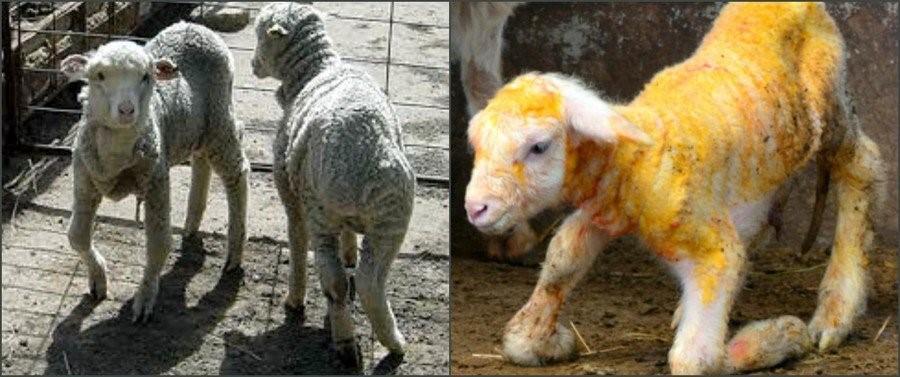
The chronic course of the pathology is usually observed at 6-8 months. This leads to increased fatigue and stunting. In animals, muscle tissue tone decreases, lameness, and developmental delay are observed. As the disease progresses, atrophy and wasting, paresis and paralysis of muscle tissue develop. Often there are problems in the work of the heart and blood vessels, and bronchopneumonia also develops.
How is disease diagnosed in animals?
It is possible to make the correct diagnosis based on the clinical picture. Also, the doctor can conduct laboratory tests. At the first symptoms of the disease and the absence of pronounced manifestations, special attention should be paid to the work of the heart. For this, functional tests are carried out and an electrocardiogram is made.
To perform the research, the lambs are forced to run for 15-30 seconds. When they stop, listen to the heart. In the presence of the disease, arrhythmia and tachycardia are present.
Treatment for white muscle disease in lambs
It is advisable to treat the disease only in the initial stages of the disease. In advanced cases of myocardial dystrophy or heart block, it is useless to do this. To cope with the pathology, sick animals must be placed on a soft bedding, provide them with complete rest and transfer to a milk diet.

It is also recommended to give lambs high-quality hay, green grass, oatmeal. They need vitamins A, D and C. However, the most effective treatment is the use of drugs with vitamin E and selenium. Usually 0.1% sodium selenite solution is used. For 1 kilogram of weight, you need to use 0.1-0.2 milliliters of the product. It is administered intramuscularly or subcutaneously.
Vitamin E is prescribed 10-20 milligrams three times a day. The drug should be given to animals for 5-7 days. Complex preparations can also be used - for example, "Selevit". They also give lambs other useful substances. These include cobalt, which is recommended for lambs in an amount of 2-4 milligrams. They also need amino acids - cysteine, methionine. These substances must be given to animals in a dosage of 0.5-1 grams 2-3 times a day.
In addition, lambs require protein hydrolysates. These substances are recommended to be administered intramuscularly, 40-50 milliliters every day. The course of treatment should be 6-8 days. If necessary, symptomatic treatment is carried out. To maintain the heart can be used 1.5-3 milliliters of "Cordiamine", 2-5 milliliters of lily of the valley tincture, 3-5 milligrams of camphor oil. In case of complications, it is recommended to use antimicrobial agents.
Danger of disease
With white muscle disease, the probability of death of animals is high. If adequate measures are not taken in a timely manner, pathology can lead to the loss of 60% of the total livestock.
Preventive actions
To avoid the development of the disease, pregnant females and cubs need to be provided with the correct feeding and housing conditions. The use of vitamins and microelements is of great importance.It is recommended to inject 1 ml of sodium selenite solution with a concentration of 0.1% intramuscularly or subcutaneously for pregnant females 1 month before delivery and for newborn lambs. Also for prophylaxis use "Selevit", "Selferol". Prophylactic doses of these drugs should be 2 times less than therapeutic ones. If you include fish oil in the diet of animals, the need for vitamin E increases 2-3 times.
There is also an oral agent for the prevention of white muscle disease. For this it is recommended to use "Bentoselen". This tool is used in tablet form. For lambs, there is a dosage of 0.25 grams of the substance, for ewes - 0.5 grams. To prevent disease in lambs, the remedy is given on days 2-3 and 25-30 days of life.
In this case, the dosage should be 30 milligrams per 1 kilogram of weight. Suyaginous ewes require 15 milligrams of substance per 1 kilogram of weight. The tool is used 25-30 days before delivery. White muscle disease is a serious condition that often occurs in lambs. If measures are not taken in a timely manner, there is a risk of death of animals.
